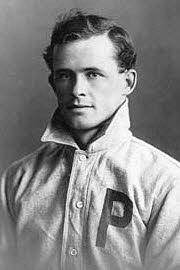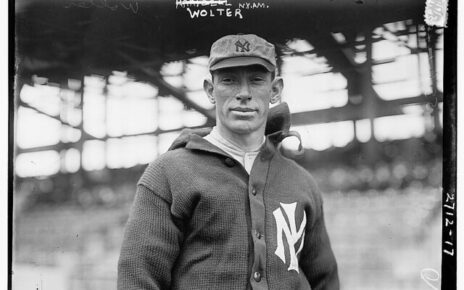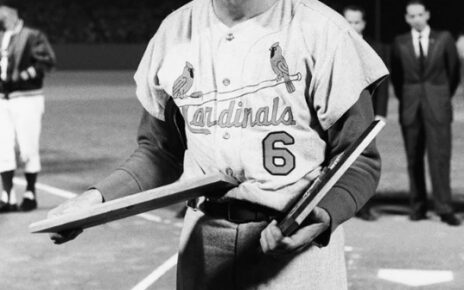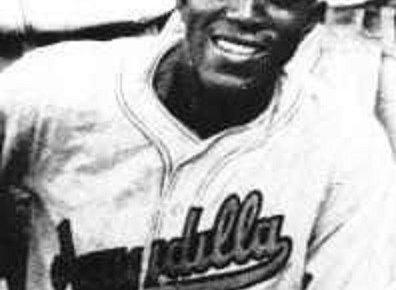Johnny Lush began his professional career in 1904 with the National League’s Philadelphia Phillies. Right out of the gate he played both sides of the ball. He didn’t play enough on both sides of the ball to qualify as a true two-way player until 1906, but in 1905 he dabbled in pitching while playing first base and the outfield one year and the next he played both ways but barely played period. Still, the two-way bug had caught Johnny and when the 1906 season rolled around he finally met the minimum criteria of at least 10 games pitching and 10 games playing a position in the field.
In 1906 Johnny played 2 games at first base, 6 in center field, and 17 in right field while pitching in 37 games. At the dish, Johnny slashed .264/.310/.307 for an OPS+ of 92 in 212 at-bats. On the mound, he threw 281.0 innings and garnered an ERA of 2.37, a WHIP of 1.327, a FIP of 2.83, and an ERA+ of 110. All in all, Johnny was a below-average hitter with little to no on-base skills or power while putting in a slightly above average season as a pitcher. His total rWAR in 1906 was 2.0, and honestly, that made him a success as a two-way player especially if his outfield defense was good. Unfortunately, his RF/9 of 2.00 is decidedly average for an outfielder, and that makes me believe that Lush should have shifted his attention solely towards pitching.
That’s not what Lush did though, he kept his two-way attempt going in 2017 even as he split time between the Phillies and the St. Louis Cardinals. With both teams, he combined to pitch in 28 games while playing 6 games in center field and 5 games in right field. It was more of the same with the bat for the lefty, a .254/.289/.344 slash line. That was good enough for an OPS+ of 101 and a slight improvement to an average hitter in a very small sample size. Lush slightly regressed on the mound, lowering his ERA+ to 94 and raising his ERA to 2.64. Across 201.1 innings pitched his FIP and WHIP improved to 2.51 and 1.207 respectively. Lush’s rWAR of 1.8 showed that yet again he had been a better than replacement level player on the whole.
The remainder of his major league career saw Lush convert to being a pitcher who only played the field in emergencies. He put together two really good seasons in 1908 and 1909 and was still above replacement level in his last big league season in 1910. The road doesn’t stop there for the Williamsport product because he took his two-way act to the minor leagues.
In 1911 he found himself playing for the Toronto Maple Leafs of the A-level Eastern League. He pitched in 36 games, putting together an RA/9 of 3.64 and a WHIP of 1.192 over 264.1 innings. He registered 118 at-bats in 15 games in the field that year. Playing the outfield Lush slashed .254/Unknown/.398. In 1912 Lund barely played the field, but in 1913 he saw 10 games in the outfield while pitching in 36 for the Maple Leafs, only this time in the AA-level International League. His final line as a pitcher included an RA/9 of 4.27 and a WHIP of 1.422 in 255.1 innings pitched. He was much better with the bat slashing .280/.325/.355. Of course, this comes with the caveat of him seeing a very small sampling of plate appearances, 116.
1914 was more two-way meandering from Lush. He split his season between the Cleveland Bearcats of the American Association and Portland Beavers of the Pacific Coast League, both AA-level. With a bat in his hand, Lush slashed .247/Unknown/.278, and while only accomplished in 103 plate appearances this is among the worst seasons Lush ever had hitting the ball. The lefty hurler fared much better on the mound, combining his stints for an ERA of 2.90 and WHIP of 1.255 over 173.2 innings. Still playing with the Beavers, 1915 would mark the end of Lush reaching the 10/10 requirement for two-way recognition. He slashed .207/Unknown/.243 in 11 at-bats and sported an ERA of 2.67 and WHIP of 1.192 in 266.9 innings pitched.
To the very end, Johnny Lush kept plugging away at being a two-way player. The stats tell the clear tale of someone who could have been a darn good professional pitcher had he just focused on that element of his game. Alas, Johnny thought he could do both and he kept playing both year-after-year with diminishing results. File Johnny Lush as a failed two-way player, but a pitcher with a lot of wasted talent.
Lead photo courtesy of Unknown – Unknown




